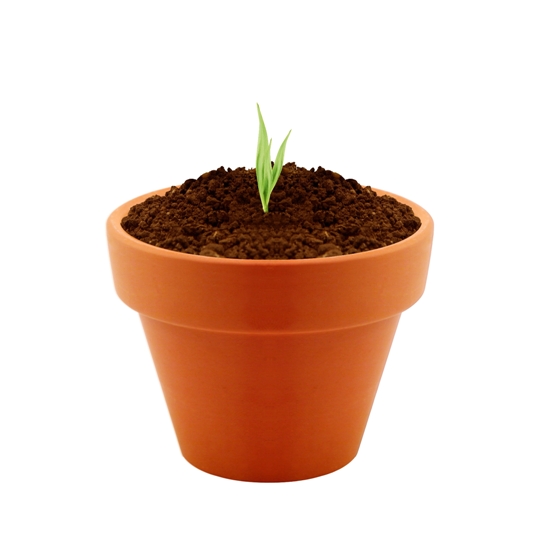
A number of years ago, I had the opportunity to assist several County Agricultural Agents who were advising those living in the inner city how to grow both flowers and vegetable plants in various types of containers. The plants were rooted in supplied soil, a soil that was considered high-grade top soil having the desired texture and fertility characteristics suitable for this application. But, in many instances, the plants were not growing as well as one expected. Why?
Plants do not grow well in what I call “displaced” soil, soil that has been taken from the field and placed elsewhere. Even when taken from the field and used to fill in a raised bed (a commonly recommended method of plant growing), it will take several years before plant growth will be as vigorous as one would wish until the two layers of soil nit together which may take several years.
In place, soil has a number of unseen unique properties, an internal structure and the fact that with depth, there exists a physical force that provides for natural water drainage, that in turn promotes the exchange of gases within the soil surface. Some have termed this property as how the soil “breathes.”
Under natural long-term conditions, a soil develops these specific physical as well as biochemical structural characteristics that support plant root growth, and in turn, promotes good top growth. If that soil structure is disturbed, then plant growth can be adversely affected. Soil structure takes time to develop, but it can be quickly destroyed by various tillage operations, such as tilling when wet or extremely dry, roto-tilling, excessive discing, or compaction occurring by repeated driving of heavy machinery over the soil when moist, and particularly when wet.
Soil structure and uniform fertility can be promoted by plowing under a cover crop, particularly if it is a legume, or a grass sward after liming and fertilizing based on a soil test recommendation. It is the plant roots and the soil surrounding the roots that contributes to establishing and maintaining the soil’s structural characteristics.
Anyone who has farmed soils that have a “clay pan” or “tillage pan” within the rooting depth finds that such soils do not support vigorous plant growth unless the “pan” is broken apart. I once heard an agronomist describe such soil conditions as “window box” growing due to the fact that the plant roots are confined to a restricted layer of soil. In addition, such soils are either continuously wet due to lack of adequate drainage or quickly exhausted of water due to plant root absorption even when rainfall is normal or supplemented by irrigation.
A building contractor sued a landscape firm who had placed a depth of top soil over the top of a parking garage, creating a “green space” of managed turf around an array of trees and shrubs. Although the initial condition of the trees and shrubs was as expected, during the 2nd year the trees began to die and shrub growth slowed. The contractor contended that the soil used was not as specified, resulting in an anaerobic condition that developed within the soil mass. Coring the soil to its total depth, soil compaction was indeed evident, with water drainage being very slow after rain. The landscape firm made several mistakes. They should have installed what is called a “French” drainage system at the bottom of the soil depth, and then layers of soil of varying texture, course textured at the base and then of finer texture when approaching the top of the soil depth. Even though the landscape firm used what was considered an excellent “top soil” of ideal physical and chemical properties, it turned out to be not suited for this application. In this situation, if one could have lifted the required volume of soil from the field, and then put it in place without disturbing it – that is, keeping it intact – the end result may have been quite different. This should be the recommended practice when taking soil from the field and placing it into a container. Do so without disturbing its structure – that is, keep the soil intact as a core of the size (depth and diameter) to fit into the rooting container.
Some have suggested modifying a displaced soil by adding organic amendments, such as peat moss or various types of composts which would add additional pore space and keep the soil from becoming compacted. It sounds like a good idea that should work, but remember that you are mixing together two substances quite different in their physical and chemical characteristics. Therefore, the mix may actually result in poorer plant growth than what might be obtained by rooting the plants in either material alone.
So what is the answer if you want to grow plants in a container? Don’t use soil. Today, there are a variety of soilless mixes that are better suited for this type of growing. However, there are still challenges – such as, how best to water and fertilize. The answer? Water and fertilize from below. To ensure good plant growth over an extended period of time, select a mix that contains a slow release fertilizer. Depth of the rooting media is also a critical factor. How deep? That’s a good question that needs to be determined through experimentation based on the container size and plant species grown as there are no set parameters. However, from my own personal experience when growing plants in containers, a rooting medium depth between 7 to 10 inches has worked the best.
Dr. J.B. Jones, Jr. is the author of several books including. Instructions for Growing Tomatoes in the Home Garden and Greenhouse. It is available in soft cover and e-book format for Kindle at Amazon.



Comment here